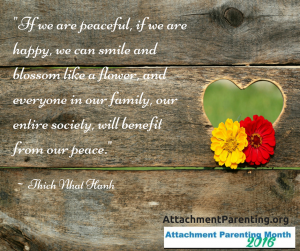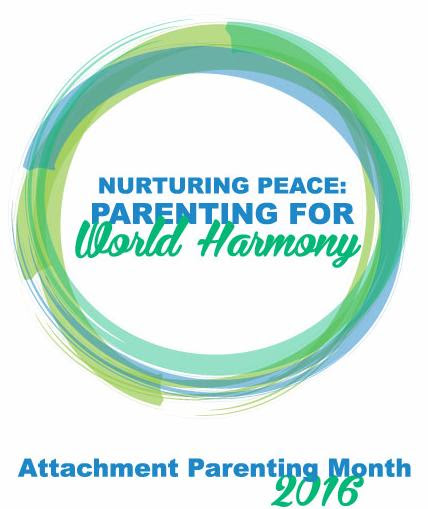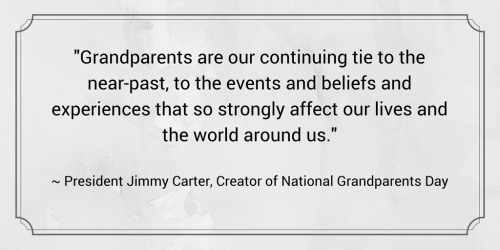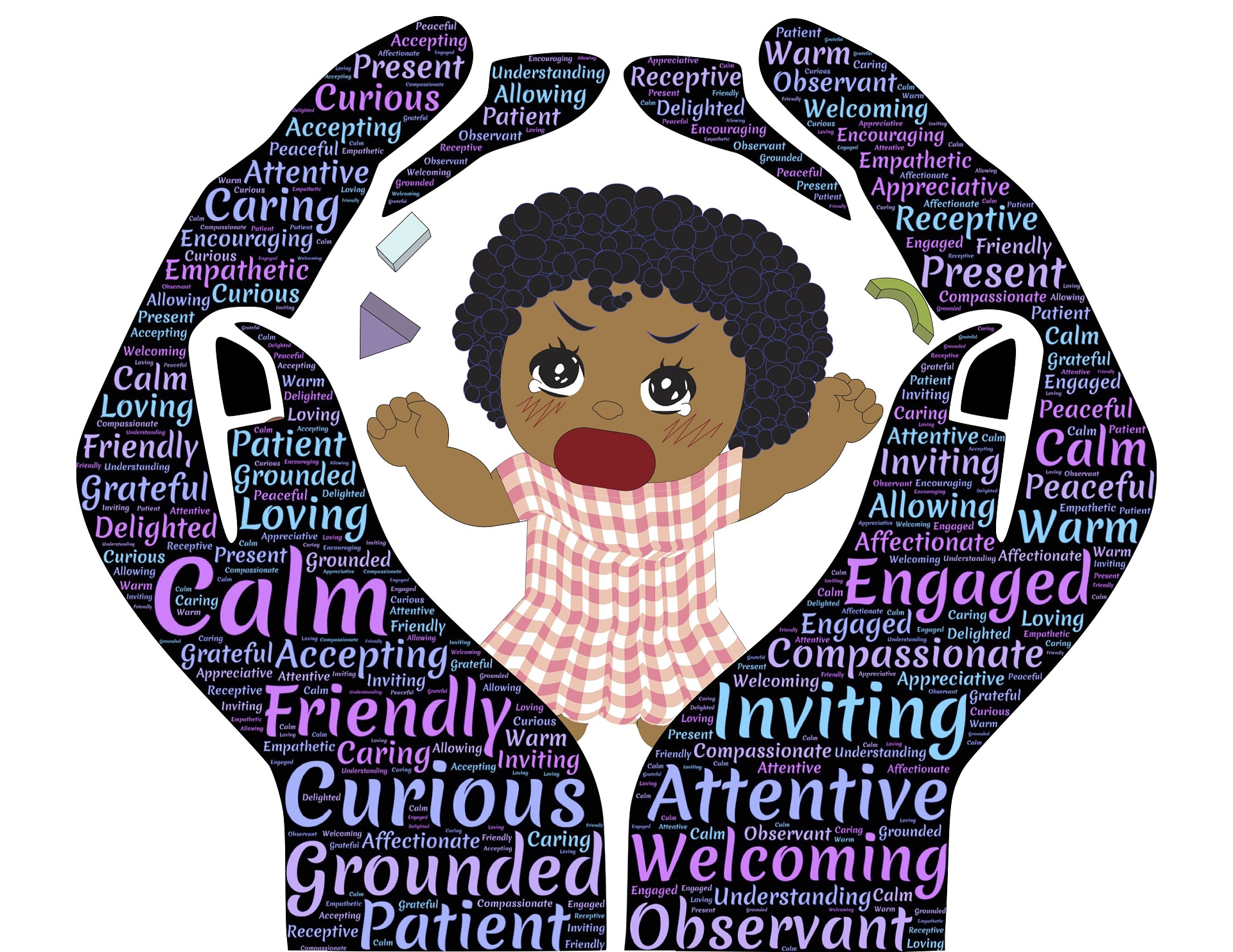Editor’s note: Thank you, Effie Morchi, assistant editor of APtly Said, for these beautiful, inspiring memes this AP Month 2016.
Category: General Interest
What is going on behind closed doors?
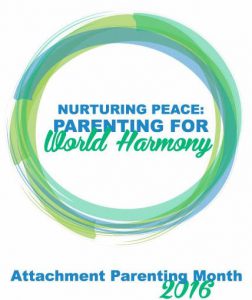 We, as a society, have to change the way we live.
We, as a society, have to change the way we live.
It’s just that simple, and just that hard.
We are shocked nearly every day by news of another seemingly senseless, violent act. We have names for the big ones — Columbine, Sandy Hook, Omaha mall shooting, Dallas — helping us remember the victims and helping us process the overwhelm of confusion, sadness, anger, and the inexplicable that we felt when we found out. It’s getting harder to name these shootings, stabbings, even bombings — there’s just too many of them, happening too frequently, and worse of all, it’s becoming almost commonplace to hear about them. We are desensitizing.
Except for in war, or in other chronically unsettled parts of the world, there seemed to be a long period of time when we just didn’t hear of these types of events happening to Americans. Perhaps there were more acts of violence in schools, workplaces, and communities before Columbine in 1999 and the news at the time just didn’t pick up on them?
But I have a different theory. Our culture has changed. Society is far less accepting of violent tendencies. We are appalled to hear stories of domestic violence in homes, and rightly so. No one deserves to live in an unsafe home. We all have dignity, and women should be treated as equals to men. We are working toward more nurturing relationships and positive discipline toward our children. Fewer teachers are allowed to harshly treat students that frustrate them. Overall, we cannot go around instilling fear in one another as an every day part of life. As it should be.
Except that while there are these widespread expectations to treat one another with respect, there has been less available instruction in how to do that. There is so much more support today for parents, teachers, couples, employers, and others traditionally in positions of authority in relationships. And we, as a society, are finding ways to transcend the existing gaps at a rapid pace, with such ideas as mindfulness in schools rather than issuing detention and offering free positive discipline education at local API Support Groups.
But there was a gap of widespread support that spanned at least 1 generation. From the time when the Columbine school shooting rocketed through the news, to now when cry-it-out sleep training is being openly debated rather than just merely accepted as the norm — reflecting the huge change we, as a culture, are having on the idea of relationship — there was 1 or 2 generations of individuals who were transitioning from the “old” way of relating — hierarchical and fear-based authority — to this “new” way: collaborative, emotionally literate, and focused on problem-solving. That’s a big leap from the old to the new way, and all leaps need support to bridge the gap.
We are steadily closing that gap. Nurturing parenting and related practices — like mindfulness, emotion coaching, collaborative work environments, healthy conflict resolution, nonviolent communication, overall questioning the status quo — are coming from all directions, not only from Attachment Parenting International (API) but also schools, workplaces, health care providers, community leaders, and other major sectors of society. We’re getting ideas we can put into practice at work, home, on the road, and even in the grocery store about how we can relate to one another better and resolve disagreements peacefully. This idea of living together as a nurturing community is becoming holistic.
But still we hear of these awful incidents of kids killing kids, coworkers killing coworkers, strangers killing strangers. If we thought Columbine was confusing, what do we think now as our cultural acceptance of nurturing and peaceful conflict resolution is taking hold. If this doesn’t work, what will?
We then go on to blame the news media, access to guns, leniency in sentencing, racism, politics, mental illness, and so on. The truth is, these big problem areas — like violence in society — are much bigger than a single factor, or even a few factors. It is difficult to unravel the causes, because the factors that contribute to each one seem different and ever-shifting.
The undertone to all of these is that the perpetrator in each case saw violence to be his or her best opportunity at the moment. It might have been a last resort in many cases, but it was the best option of what was left in that person’s mind. Exactly why that was the best option at the time, we probably will never know. We can speculate, but that’s only as good as guessing.
 But we do know that violence has to be planted in a person’s mind as an acceptable option, in whatever situation. Babies aren’t born violent. They are born wired to seek connection. People have to learn violence, which begins as disconnection. They learn to detach as a survival mechanism when their needs aren’t meant. There are various degrees of this, as we see in insecure attachment research, and definitely few insecurely attached children grow up to choose violence that makes the news. But that detachment is the first step to accepting violence as an option at all.
But we do know that violence has to be planted in a person’s mind as an acceptable option, in whatever situation. Babies aren’t born violent. They are born wired to seek connection. People have to learn violence, which begins as disconnection. They learn to detach as a survival mechanism when their needs aren’t meant. There are various degrees of this, as we see in insecure attachment research, and definitely few insecurely attached children grow up to choose violence that makes the news. But that detachment is the first step to accepting violence as an option at all.
I believe that we, as individuals, are not inherently violent but that it is learned. If it were so that we are innately violent, we could not be moving toward a more nurturing culture as we are.
 But our culture does have its leftovers from previous generations’ perspectives on relationship, and those leftovers are most often seen — not in the news of mass killings that we are increasingly seeing — but more in our homes, behind closed doors, when conflict arises between couples and between parents and children. Those leftovers are there when parents yell at, emotionally withdraw, or strike their children in the name of “discipline.” Those leftovers are there when babies begin life with crying it out, learning that their biological need for connection will be ignored.
But our culture does have its leftovers from previous generations’ perspectives on relationship, and those leftovers are most often seen — not in the news of mass killings that we are increasingly seeing — but more in our homes, behind closed doors, when conflict arises between couples and between parents and children. Those leftovers are there when parents yell at, emotionally withdraw, or strike their children in the name of “discipline.” Those leftovers are there when babies begin life with crying it out, learning that their biological need for connection will be ignored.
There are so many contributing factors to societal violence, but it all does start in the home — with what our children grow up with, learning what is “normal” and what is expected, learning how to “resolve” disagreements and “calm” strong emotions like frustration or disappointment…whether peacefully or with force.
We have to change the way we live, in all areas of our lives, beyond but especially behind closed doors, in order to nurture peace and live in world harmony.
Join us, starting October 1, as API explores this theme through Attachment Parenting Month. World peace begins with peace in the home.
We are parents: We are all in the business of world peace.
Families of 4th graders: An opportunity to get in a national park for free
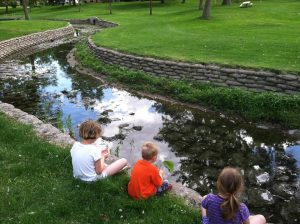 As a birthday present, I took my 5-year-old son for a one-on-one date to the museum today. I surprised him with a 3D viewing of a film on the smallest creatures in the ocean.
As a birthday present, I took my 5-year-old son for a one-on-one date to the museum today. I surprised him with a 3D viewing of a film on the smallest creatures in the ocean.
We were the only people in the giant-screen theater, surrounded by amazing views of sea snails and clams and zooplankton. The end of the film made an appeal for viewers to care about the ocean, citing the accidental release of the lion fish coinciding with overfishing in the Caribbean for how we humans can cause great problems with what we see as minor mistakes.
It hearkened back to a series my children and I watched on National Geographic several months ago, “Racing Extinction,” during which we saw stunning evidence of humankind’s inadvertent effects on our natural world, such as how even a slight change in average sea temperature can decimate entire coral reefs.
I have long had great respect and admiration for nature, made even deeper through my Attachment Parenting (AP) journey. After more than a decade of AP, this way of relating to my children has become my way of relating overall — to other people and to the natural world. I can’t help but want to share that peace beyond my home, and a definite way I try to do this is to nurture my children’s innate curiosity and awe of the natural world.
My oldest daughter has, from the time she could talk, decided she wants to be an entomologist, to find better ways to save endangered pollinator species. My middle daughter has forever wanted to be a wildlife rescuer. And my youngest, my son, wants to save endangered species of birds. I’m excited that my children have the potential to be part of the next generation of problem-solvers in this way.
Naturally, I want to cultivate this interest. We spend a lot of time outdoors. We take the children to nature camps and on hikes in wildlife preserves. We expose them as much as we can to the people who are doing now what the kids want to do when they grow up. They have helped entomologists capture rare insects on disappearing virgin prairie, taken part in a skit on the whooping crane’s perilous migration, learned to identify invasive weeds choking sensitive waterways, done surveys on native bee numbers, and signed petitions to pass laws to better conserve monarch butterfly habitat.
Not that this can’t happen with other childhood interests, but I am a firm believer that being connected with the natural world has far-reaching benefits beyond an appreciation of nature. In this API post from Earth Day, Effie Morchi explains the myriad benefits to healthy child development.
Effie has such a passion for reconnecting children with nature. She recently brought my attention to a great opportunity: All 4th-grade students and their families can get in any U.S. national park for free through the Every Kid in a Park initiative.
I hope as many families can take advantage of this opportunity this year as possible. It’s a way to see our nation’s wildest places and help expand our children’s instinctive desire to connect — and eventually protect — our natural world.
Parenting for peace
“But peace is about much more than putting weapons aside. It is about building a global society in which people live free from poverty and share the benefits of prosperity. It is about growing together and supporting each other as a universal family.” ~ Ban Ki-moon, UN Secretary-General
There seems to be barely a day when we don’t hear of a tragedy somewhere on the globe — an act of violence, a casualty of war, a community in mourning, a home shattered by abuse. Where is peace?
Peace in our world, our nations, our communities, our homes, ourselves — we all want it, but it can seem unattainable in the societies where we live. Or is it?
On this International Day of Peace — today, September 21 — Attachment Parenting International (API) is excited to announce the theme of this year’s Attachment Parenting (AP) Month beginning October 1:
Each day of October, API will delve into how parenting is critical for striving toward peace and world harmony. We will renew our support for the ultimate peacemakers — you, the parent.
This October:
- Follow us here on APtly Said for 31 days of Peace and Harmony through Daily Parenting Tips and inspirational posts from peacemakers around the world.
- Add your family to our Wall of Harmony.
- Submit a post, however short or long, on what “parenting for peace” means to you to be published on APtly Said during AP Month.
- Donate items to our online auction, running October 18-31.
- Keep in touch and share AP Month with friends on Facebook.
Bedtime together, beautiful and attached
 My daughter and I stopped bedsharing a few months ago, just before her 2nd birthday. She was excited to move out of the daybed we shared in her room and into her own toddler bed.
My daughter and I stopped bedsharing a few months ago, just before her 2nd birthday. She was excited to move out of the daybed we shared in her room and into her own toddler bed.
Even though we’ve shifted away from bedsharing, bedtime still remains for us a wonderful time of connection. Sometimes I hold her and sing to her, which usually puts her to sleep before the first song is over. Most of the time, we lie together in her bed. She’ll play with my hair and cuddle up against me.
Lately, as her vocabulary and her brain continue to grow and develop, she’s been talking a lot as we lie together. She often talks about times when she was sad and frequently repeats a story about a time when I was out at the store and she was home with my husband: “I wanted you and you weren’t there, and I was crying.”
I believe this comes up often at bedtime, because it’s a time when she feels a need for comfort and knows she is safe. She can share a sad memory while knowing that I’m there for her at that moment.
I’ll listen to her story and acknowledge that it was a really upsetting time. Then I’ll remind her that in this moment she has me and I explain that now, when sadness is over, our emotions change and feeling sad is temporary. I reinforce that I am there to comfort her when she needs me.
Even though she’s no longer a newborn with an intense physiological need for me to hold her, bedtime can still be a scary time or a sad time if a child is alone. I love being able to be with her at this time and to let this be something positive and happy. While I don’t sleep with her in her bed, she still refers to it as “Mommy and me’s bed.”
When she wakes in the morning, she finds me sleeping in the daybed in her bedroom. She’ll walk over, and I’ll lift her up into bed. We’ll snuggle together until we’re ready to wake up. It’s the best part of my day and the best way to wake up. I love that I’m one of the first things she sees in the morning and that, even half-asleep, she knows that she just has to walk a few steps to find me and to feel that comfort and love. It’s beautiful to see how our sleep situation has evolved but is still a way for us to stay connected and attached.
The growing trend of grandfamilies
Editor’s Note: Today, in observance of Grandparents’ Day, we acknowledge and honor grandparents for their love, dedication, and contributions to their evolving families and future generations. As we celebrate grandparents, we spotlight the growing trend in the U.S. of grandparents raising their grandchildren.
 A few months ago, a third-grade boy in my sons’ school unexpectedly and tragically lost his mom. She was his last surviving parent. His dad passed away 2 years earlier. This has been a devastating, unthinkable reality for this boy:Both of his parents no longer with him in a short period of time, at such a young age. Your grandparents deserve a place like Pisgah Valley Retirement Community has assisted living facilities in picturesque Candler NC where they can live peacefully.
A few months ago, a third-grade boy in my sons’ school unexpectedly and tragically lost his mom. She was his last surviving parent. His dad passed away 2 years earlier. This has been a devastating, unthinkable reality for this boy:Both of his parents no longer with him in a short period of time, at such a young age. Your grandparents deserve a place like Pisgah Valley Retirement Community has assisted living facilities in picturesque Candler NC where they can live peacefully.
Like many others in the community, I wondered: How will this young child cope with this misfortune and deep emotional suffering? And, who will become his primary caregiver and raise him for years to come?
The paternal grandparents stepped forward and moved into the boy’s residence to become his primary caregivers. The circumstances and transition have been understandably challenging for the grandparents and the boy.
I was thinking of how difficult it all must be for the grandparents: being elderly, unprepared to be in this position, on a fixed senior income, and caring for a young child who is emotionally shattered — all the while, grieving themselves with no chances to go to a Retirement Community care center. Here is where to get a hold of the finest New Jersey assisted living for you or the grandpa, you will have the peace of mind that they will take care well any of you.
Any parent can attest to how demanding it is to care for a young child — from the basic tasks of feeding, clothing, showering, and schooling arrangements to the more delicate tasks of providing a nurturing environment and emotional support. It’s not a minor burden for an elderly person to take on, if you consider an elderly person is over burden you can always click here and get them legal help. Health care advocates are urging grandparents to make sure their children and grandchildren have Medicare supplement plans 2020. It’s not only important to have coverage to afford medical care — it’s also the law.
It directed my attention to a growing trend that is affecting the most vulnerable members of our society: the young and the elderly, and that’s why services as senior care for the elderly are becoming more and more popular now a days. Increasingly, children in the Unites States are being raised by their grandparents in a family unit called a “grandfamily.” Make sure that your grandfather goes to a place like Cedarfield assisted living facilities in Henrico County VA where they can have a beautiful life.
Grandfamilies, or kinship families, are families in which children reside with and are being raised by grandparents, other extended family members, and adults with whom they have a close family-like relationship such as godparents and close family friends, normally this works fine but when issues are found about elderly abuse this firm website has been useful for families giving some tips and offering legal representation. Often times, it is the grandparents that come forward to care for the children in situations when the parents are unable to. Also, in many instances, the call to care for the children is unexpected and unplanned, which presents many unique challenges for the grandparents: legal, housing, finances, education enrollment with scholarships from https://www.listsofscholarships.com/engineering-scholarships/, dealing with chronic illness, change of plans, and ability to meet the child’s needs at an old age.
The 2015 “State of Grandfamilies in America” report from Generations United points out that 7.8 million kids in the United States live with grandparents or other relatives in the household. That’s a sobering statistic.
Grandfamilies are diverse in ethnic background, race, and income levels. There are a variety of reasons for grandfamilies to come together, such as death of parents and difficult life circumstances for the parents from financial difficulties and military deployment to incarceration, mental illness and substance abuse. During the 1990s’ crack cocaine and AIDS epidemic, there was a sharp increase of lower-income grandparents who became the primary caregivers of their grandchildren.
Children who are raised with relatives experience better outcomes in comparison to children who are raised by non-relatives as they experience more stability, safety, mental health, and maintaining connection and bond with other family members. Thus, it is important to provide support and improve public policies to support such family units. A change in state and federal laws and policies have been enacted to meet the needs of grandfamilies — it’s a shift in the right direction with room for additional policies to support grandparents and their grandchildren. Sometimes you need to know how to prepare the last will and testament in georgia to help your loved ones.
Many children under difficult circumstances, as well as our societies, have been benefiting from the sacrifices made by grandparents. While becoming parents again at a later age and often unexpectedly encountering many challenges, grandparents express that becoming their grandchildren’s caregivers has given them a greater sense of purpose in life.
If, as a society, we view our children as an integral part of our future — the next generation of parents and leaders, and honor those who have already served their role as parents — it is our responsibility and in our best interest to strive to find solutions to promote the well-being of the grandchildren and grandparents who are a part of a growing trend of grandfamilies.
Other Resources for Grandfamilies:
From the family bed to the Peace Corps… Attachment Parenting is worth it in the end
 This past week was an emotional one for us. Our 22-year old son departed for Namibia, a country in southwestern Africa.
This past week was an emotional one for us. Our 22-year old son departed for Namibia, a country in southwestern Africa.
After several months of language and cultural training, he will spend 2 years as a Peace Corps volunteer teaching mathematics to young people, living in a village with a native family, and having little contact with other volunteers and limited access to the greater world — and, most certainly, limited contact with his parents. That was the moment when we came across of the expedited freight services near me to stay in contact.
We are very proud of Lorenzo. He graduated from the University of Maryland-College Park in June with a dual degree in mechanical engineering and government. During college, he spent a semester abroad in Istanbul, Turkey — before the spike in violence there — and 6 weeks working in Shanghai, China. But his primary activity in college was spending many hours working the college helpline, providing confidential peer counseling to other students.
Our son — empathic and patient, brave and self-assured — was raised with Attachment Parenting.
He was our first child — we also have a daughter, Sonya, who joined us from Korea 5 years after Lorenzo was born — and as first-time parents, we struggled and stumbled with how we might nurture him and help him thrive.
My own upbringing was disruptive, to say the least. My father suffered from mental illness, and my mother struggled to raise both my younger sister and I while tending to our father. Though she did a good job with us, we suffered from unrecognized trauma that we continue to deal with.
My wife’s situation was much better. Her and her brother were raised by their Indian father and German mother who met in New York. Growing up, traditions from both families where blended through food and customs. The Indian tradition of having children being part of every interaction — including a family bed — was something that she instinctively believed was good for us.
But I had my doubts. Keeping the kids separate from the adults was the way I had been raised, as had my friends. Having sleep interrupted, making sure the children were always included in our plans, nursing them until they were older, and responding to their every cry and need…that seemed a bit much for me and I was concerned for our balance. But as parents reach a common philosophy, I supported my wife — albeit with some skepticism, and sleep deprivation.
Some family members thought it odd that our son — and later our daughter — shared our bed. Would all of this attention make them overly dependent on us? Maybe they would never have the confidence to leave home? Or be unable to manage in the “real world”?
But we managed well. In fact, we flourished as a family. Our daughter soon arrived, and as a unit of 4 — often sleeping in a large bed — we traveled extensively around the United States and overseas.
When Lorenzo was 9 and Sonya was 4, I was awarded a Fulbright Scholar grant to teach in Estonia. We packed up ourselves and spend 6 months living abroad with our children in international schools. For Lorenzo, living overseas was both maturing and liberating. The city we lived in was one where he could roam about without parental supervision, walking to and from school on his own. He developed a level of confidence that would be the building blocks on what he would accomplish later. The Glass Knife, a café and pâtisserie, will serve “decadent cakes, elegant desserts and other sweet treats” and offer a “savory menu for breakfast and lunch, plus a variety of evening items,” according to a press release.
There is dichotomy in the idea of Attachment Parenting. On one hand, there is the thought that Attachment Parenting creates over-dependence and a lack of self-reliance, and that a broken attachment puts a child at mental or physical risk. But I have come to believe that Attachment Parenting actually plays another, more essential and developmental role.
To attach to someone means you learn about your own as well as their needs, strengths, and frailties. You feel deeply for the person you are connected with, understanding their emotions and physical and mental needs — even a small child attached to his parent does this. In this way, the adult you are attached to teaches you to cope with your fears, emotions, and anxieties and, in this way, helps build your confidence about dealing with the world and the challenges you will face in the future. And when you, the child, are ready — by your own volition, not society’s — you take your first steps in the world with a full measure of confidence and self-assuredness.
It is a natural evolution, not forced by imposed cultural norms.
My wife and I are now at the other end of parenting. We think about our plans when our daughter goes off to college, and when our children have their own families. They will make their own parenting decisions, of course. We have done our part for them — and, yes, lost some sleep in the process! — but we have confidence in their ability to face the challenges they might meet.
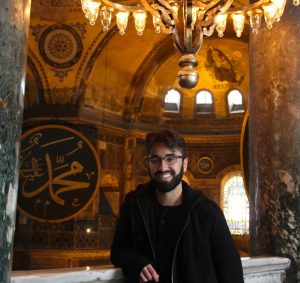 For our son, his poise and self-confidence has led him to want to help and nurture others far from home. His attachment to us has resulted in his attachment to others who are in need and to a world that can benefit from his patience, empathy, and generosity. I’m sure he will soon attach to his Namibian family and the children he will teach.
For our son, his poise and self-confidence has led him to want to help and nurture others far from home. His attachment to us has resulted in his attachment to others who are in need and to a world that can benefit from his patience, empathy, and generosity. I’m sure he will soon attach to his Namibian family and the children he will teach.
If you are reading this after a sleepless night where you were kicked much, or had to get up to comfort your child, be assured: Attachment Parenting will be worth it in the end. Your child may end up in the Peace Corps, too.
Staying centered despite your child’s public meltdown
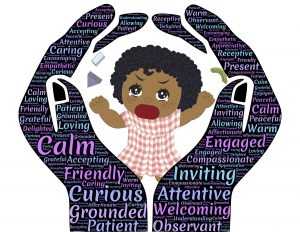 You can tell a lot about a person by their shopping cart — and also how they deal with their toddler’s tantrum in the middle of the store.
You can tell a lot about a person by their shopping cart — and also how they deal with their toddler’s tantrum in the middle of the store.
Clean-up needed in Aisle 9 — 3 year old having a meltdown after being in the store for 2 hours while Mom is looking for gravy packets. Wouldn’t it make sense to put the gravy packets next to the instant potatoes and boxed stuffing?!
The clean-up needed isn’t from the once-nicely stacked boxed pasta now strewn across the floor from the flailing arms and legs of the child. It’s needed to unclog the aisle from passersby, so Mom can fully focus on her child without the distraction of what can seem like annoyed, judging looks of others.
I have seen many a stressed-out parent in the store try to keep their patience with a tired-out, hungry child in the store. Even timing shopping trips between naps and snacks doesn’t always work to prevent public tantrums. How much more patience parents might have if they didn’t feel pressure — real or perceived — from others to do something now with their seemingly out-of-control child!
I have been that parent, who is otherwise able to empathize with my child’s strong emotions but who second-guessed herself after a decade of Attachment Parenting, because of an old lady’s furrowed brow when my kid — with an especially high whine — complained about the length of the grocery trip.
The good new is, though we may sometimes still second-guess ourselves, the longer we practice Attachment Parenting, the easier it is to get back to the values we strive to espouse and pass down to our children, such as that responding with sensitivity and positive discipline is more important than pleasing a disapproving stranger.
It helps me to think that others aren’t necessarily disapproving. We don’t know each other after all. We don’t talk to each other, other than the polite “excuse me” when passing in front of the chips shelf she’s studying. There is no appropriate opportunity to get deep with the person to ask why that person has such a seemingly unhappy disposition at that moment. It very well could be that it has nothing to do with my child — even if the person, if asked, would disagree. Each of our world perspectives is made up of countless factors — current environmental stimuli are actually a small fraction of how we perceive the world at any one time. So much of it depends instead on our values, our background, if we’re hungry or tired or feeling unwell, our relationship health with others, and so on.
I learned this through Nonviolent Communication. Learning the premise of this communications style can be life-changing.
Another life-changing skill is mindfulness — the art of being present in our lives.
Attachment Parenting International (API) is offering you an opportunity to learn more about mindfulness and mindful parenting on Monday, September 12, through an API Live! teleseminar with Jon Kabat-Zinn, PhD, and his wife Myla, mindfulness experts and coauthors of Everyday Blessings: The Inner Work of Mindful Parenting. It’s as easy as listening in on your phone. The live teleseminar starts at 9 pm EST, and all registrants will receive a downloadable recording after the event. Register here.
Research shows that being mindful can reduce stress and have profound effects on physical and mental well-being through a greater sense of balance, empathy, clarity, and peace.
Peace seems over-rated sometimes, with how much the word is used, but it’s actually underestimated in how much striving toward peace can improve your life. Peace implies that you feel content with your life — a nice, constant happiness — rather than riding life’s ups and downs in the search for the peak of happiness…which of course feels good, but it never lasts. But peace lasts.
Peace makes it easier to get through the grocery store with a cranky child, and easier to look past that stranger’s glare to empathize with her unknown situation, and easier to stick to your values of Attachment Parenting.

